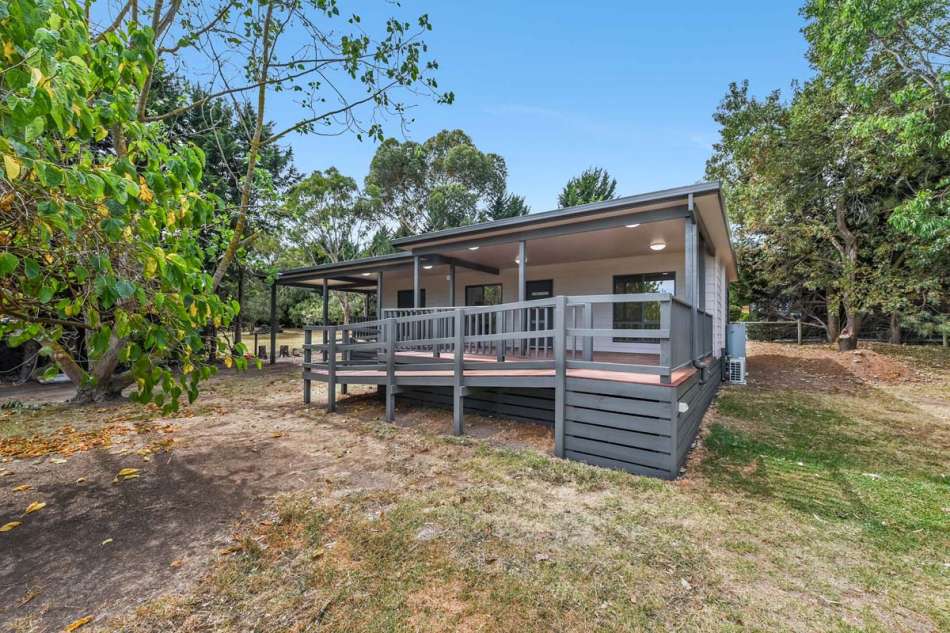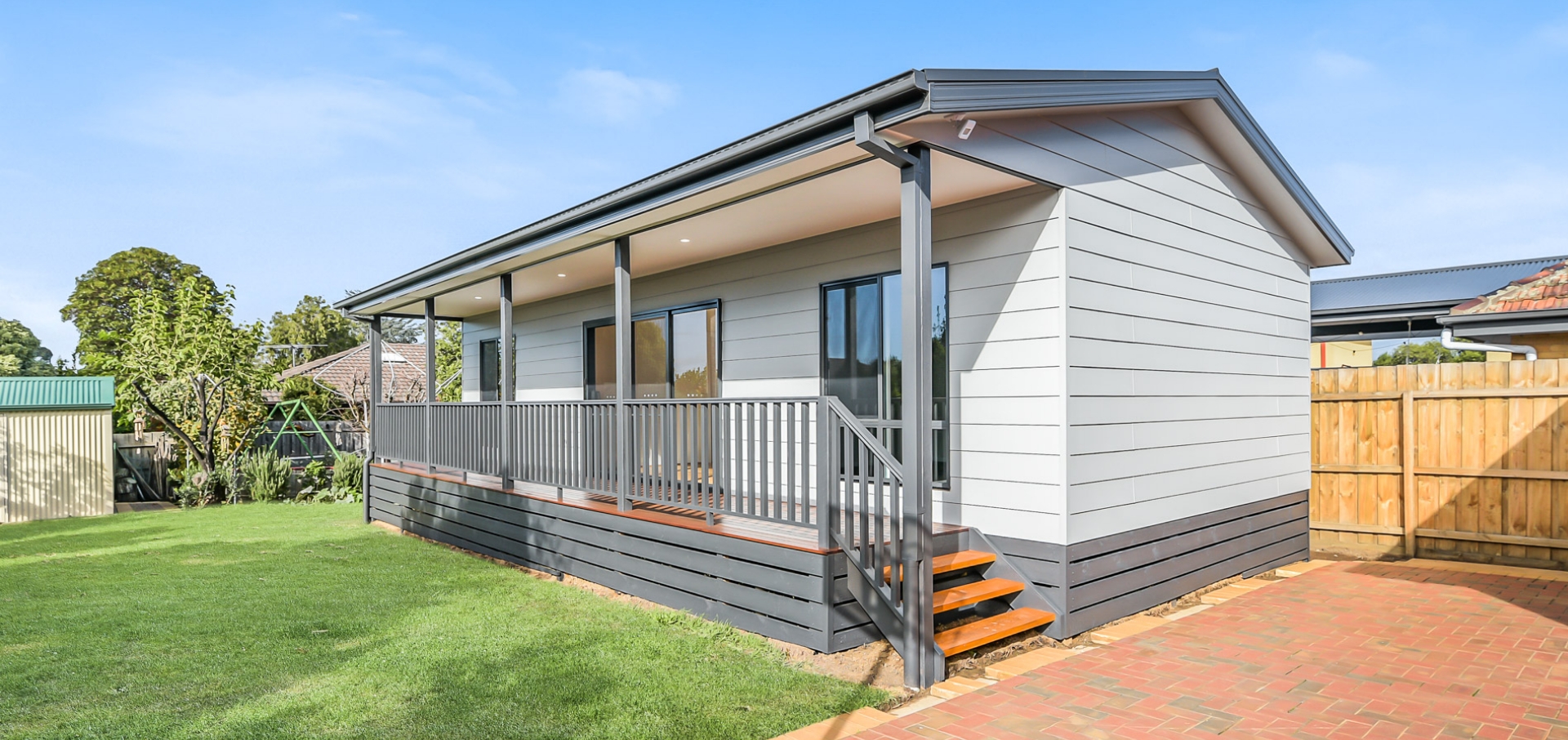
Why Prefab Homes are a Popular Choice: Pros and Cons
 Superior Granny Flats Team
Superior Granny Flats Team
 March 14, 2025
March 14, 2025 Prefabricated homes are becoming increasingly popular in Australia, and for good reason. These homes, which are built in factories and then assembled on-site, have become a practical alternative to traditional construction methods. They save time, often cost less, and can provide quality housing solutions for many homeowners.
Prefab homes have come a long way from their humble beginnings. The latest models feature modern designs, quality materials, and impressive sustainability features. But like any housing option, they have their strengths and limitations. This article examines what makes prefab homes attractive and what factors you should consider before choosing one.
What Are Prefabricated Homes?
Before weighing the pros and cons, it's important to understand what we mean by "prefabricated" or "prefab" homes.
In essence, these are dwellings that are manufactured off-site in a factory setting, then transported to their final location for assembly. This approach stands in stark contrast to traditional construction, where homes are built entirely on-site from the ground up.
Prefab homes come in several varieties:
- Modular homes: Complete sections (modules) built in a factory and assembled on-site
- Kit homes: Pre-cut, pre-measured components delivered for on-site assembly
- Manufactured homes: Fully constructed on a permanent chassis, then transported whole
- Panel homes: Flat panels constructed off-site and assembled on location
Each type offers its own set of benefits and considerations, but they all share the fundamental characteristic of being primarily constructed away from their final resting place.
The Advantages of Prefab Homes
1. Cost-Effectiveness
Perhaps the most compelling reason people turn to prefab homes is their wallet-friendly nature. Traditional construction often comes with unexpected expenses—weather delays, contractor scheduling issues, material shortages, and the like. Prefab construction largely side steps these budget-busters.
Factory construction means predictable labour costs, bulk material purchasing, and minimal waste. The controlled environment eliminates weather-related delays, and the streamlined process reduces labour hours. The result? Savings that typically range from 10% to 25% compared to traditional construction.
Have you ever noticed how a production line can create products more efficiently than artisanal methods? The same principle applies here. When your home is one of many being produced in sequence using standardised processes, economies of scale kick in magnificently.
2. Speed of Construction
Time is money, as they say, and prefab homes deliver impressively on the clock. While a conventional home might take 6-12 months to build, a prefab alternative can often be ready for occupancy in just 3-4 months.
This dramatic time saving occurs because site preparation can happen concurrently with factory construction. While your foundation is being prepared, your home is simultaneously taking shape in the factory. It's like having two teams working in parallel rather than in sequence.
3. Quality Control
Contrary to outdated perceptions, today's prefab homes often boast superior construction quality compared to their site-built counterparts. Factory settings allow for precise measurements, controlled conditions, and consistent application of techniques and materials.
In a factory, walls are perfectly square, joints are precisely fitted, and materials are protected from weather damage during construction. Inspections occur at multiple stages throughout the manufacturing process, not just at completion. The result is often a tighter, more precisely constructed home that outperforms traditional construction in terms of structural integrity and energy efficiency.
4. Energy Efficiency
Speaking of energy efficiency, prefab homes typically shine in this department. The factory-controlled environment allows for more precise insulation installation, tighter seals around doors and windows, and better-fitted components overall.
Many manufacturers also use advanced techniques like vacuum-sealed insulation panels and integrated energy management systems that would be difficult to implement on a traditional building site. For homeowners, this translates to lower utility bills and a reduced environmental footprint—a win-win situation that keeps on giving long after construction is complete.
5. Sustainability
Prefab construction offers significant environmental benefits. The factory setting minimises material waste through careful planning and recycling. Transportation efficiency is maximised by consolidating deliveries. And the precision construction techniques result in buildings that consume less energy throughout their lifecycle.
Many prefab manufacturers also emphasise sustainable materials and practices in their construction. From recycled steel frames to responsibly sourced timber and low-VOC finishes, environmental consciousness is often baked into the prefab approach.
Eyeing relocatable homes in Ballarat, Bendigo, or Gisborne? At Superior Granny Flats, we aim to deliver quality, affordable prefab homes. We offer high-quality, durable and modern prefab homes to Victoria residents at cheaper prices.
The Drawbacks of Prefab Homes
No housing solution is perfect, and prefab homes do come with certain limitations. Understanding these potential drawbacks is essential for making an informed decision.
1. Customisation Constraints
While prefab homes have come a long way in terms of design flexibility, they still can't match the unlimited customisation potential of traditional construction. Manufacturers typically offer a range of models and modification options, but structural changes and completely bespoke designs can be challenging to accommodate within the prefab framework.
If your vision includes highly unconventional layouts or completely unique architectural features, you might find the prefab route somewhat restrictive.
2. Land and Site Considerations
Not every plot of land is suitable for a prefab home. Steep slopes, difficult access, or unstable soil conditions can complicate delivery and installation, potentially negating some of the cost advantages. The need for a crane, wide access roads, and suitable anchoring points can add complexity and expense to the process.
Before committing to a prefab solution, it's crucial to assess your site's suitability and factor in any additional preparation work that might be required.
3. Financing Challenges
Traditional construction loans follow a familiar pattern that banks understand well. Prefab construction, with its different payment schedule and construction timeline, sometimes faces financing hurdles. Some lenders may require special arrangements or have limited experience with prefab projects.
Additionally, while the value appreciation of quality prefab homes has improved significantly, some financial institutions still harbour outdated perceptions about resale potential. This can occasionally translate into less favourable lending terms.
4. Transportation Limitations
The need to transport large components by road imposes certain constraints on prefab designs. Module sizes are limited by transport regulations, bridges, and road widths. This can affect ceiling heights, room dimensions, and overall home size.
While clever design and on-site finishing work can mitigate many of these limitations, they remain a consideration, particularly for larger or more ambitious projects.
5. Local Regulation Variation
Building codes and regulations can vary significantly between jurisdictions, and not all areas are equally accommodating of prefab construction. Some regions may require additional inspections, documentation, or modifications that can add time and expense to the process.
It's essential to research local requirements thoroughly and ensure that your chosen prefab solution complies with all relevant regulations before proceeding.
Looking for kit homes in Geelong, Melbourne, or Sunshine Coast? You can come to the expert team at Superior Granny Flats. With over 26 years of experience, we specialise in building and designing quality, affordable prefab homes.
Making the Right Choice for Your Needs
When deciding whether a prefab home is right for you, consider your priorities carefully. If speed, predictable costs, energy efficiency, and quality consistency top your list, prefab construction offers compelling advantages. If unlimited design flexibility, unique site integration, or the involvement in every construction decision is more important, traditional building might better serve your needs.
Many successful homeowners find that a hybrid approach works best—using prefab construction for the main structure while incorporating custom elements for personalisation. This balanced strategy can capture many prefab benefits while still allowing for individual expression.
The Superior Granny Flats Advantage
At Superior Granny Flats, we specialise in bringing the benefits of prefabricated construction to the granny flat market across Australia. .
What sets us apart from other prefab builders?
- Every prefab unit we create is manufactured entirely in Australia
- Proven Experience with 250+ Units Every Year - With hundreds of successful installations annually across Victoria and Queensland, we have the expertise and scale to deliver your project efficiently.
- Price Guarantee: We'll Beat Any Written Quote By 5%
- Family Owned and Operated Company - As a family business, we take personal pride in every project and treat our clients with the care and attention they deserve.
- We build quality prefab units throughout VIC & QLD, with expert knowledge of local regulations and conditions.
- Registered Building Practitioner DB-U 3909 - You can trust our professional credentials and commitment to meeting all building standards.
Visit our showroom to experience our build quality firsthand, or arrange a virtual consultation to explore how a prefab granny flat might work on your specific property.
Contact us today at 0419 540 393 or email us at info@superiorgrannyflats.com.au to begin your prefab journey with confidence.
- Features That Make 3-Bedroom Granny Flats Attractive to Tenants
- Why 60m² Granny Flats Are Ideal for Property Investment in Victoria
- Top Benefits of Pre-Built Homes for Rental Investors
- Granny Flats or Duplexes: Which Option Offers Better Rental Returns in Victoria and Queensland?
- Impact of Granny Flats on Property Valuation in Victoria
Brands We Work With







for further information




